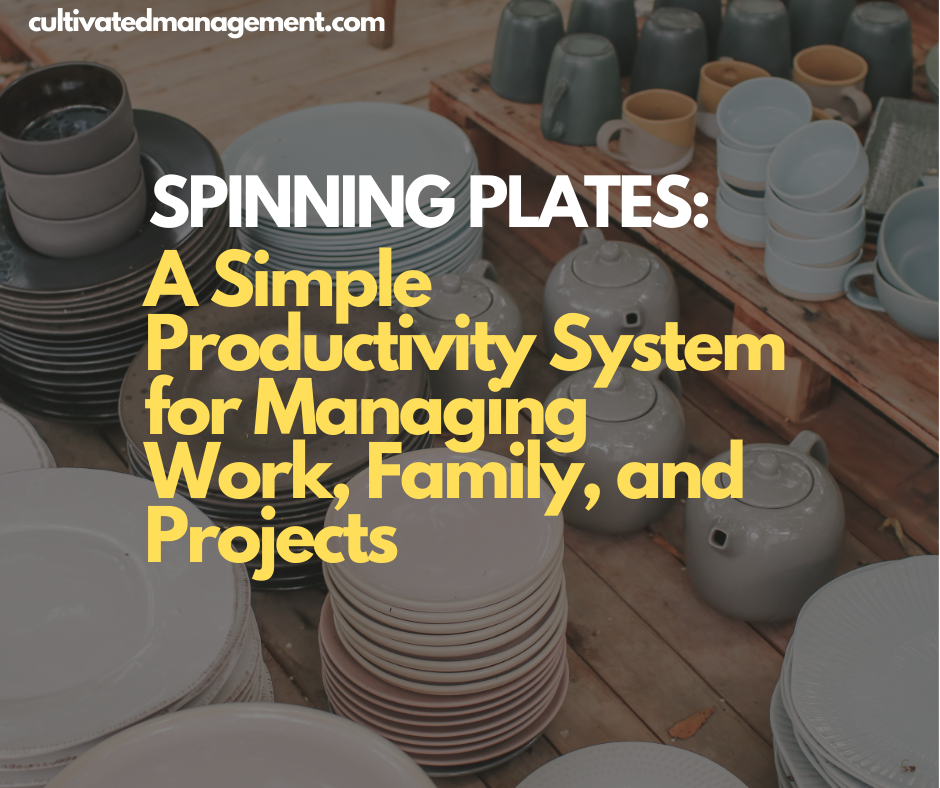
How I Keep All My Plates Spinning (Without Being Superhuman)
Someone asked me the other day how I keep all my plates spinning. On another call, I was described as “superhuman.” At a conference, I was introduced as “an anomaly capable of getting more done in a day than some people get done in a year.” (I’m not sure that was a compliment.)
I’m none of these. I just rely on productivity systems to help me get things done.
Check out the podcast, or read on for more
But before I share my system, I should say: there’s little point in building productivity systems to do the wrong things — or to do more of the work you dislike faster.
I've written about this before:
- 👉 Decide the thrive – and define what that means to you
- 👉 Make sure your ladder is leaning against the right wall
Once I was clear on what I wanted to accomplish, I implemented a productivity system using Todoist, Trello, and G Suite tools. It may not work for everyone, but there are nuggets here that might help.
This article first appeared in the Meeting Notes newsletter - Get One Idea a Week to Lead with clarity and cultivate workplaces that enrich the lives of all who work in them.
Spinning Plates
Like everyone else, I have many plates spinning.
After deciding to thrive, the first task was identifying which plates I wanted to keep spinning — and which to say “No” to or delegate. After years of trial and error, these are my main plates:
- Work 9–5 as a communication coach and consultant
- Publish 3–5 pieces of content to this blog per week
- Ship one Multiple Source of Income (MSI) per quarter, like Zero To Keynote or the Superpower workshop
- Look after my family and household obligations (I’m married with three sons)
- Co-host the Stationery Freaks podcast monthly
- Produce one video a month for my YouTube channel
- Sporadically post to my HAIWPW podcast (I need more consistency here)
- Stay healthy, happy, and keep learning
Without a system, I’d be overwhelmed. Long-time readers will notice these map to the “Pillars of Life.”
Trinity of Effective Communication Bundle: Get Zero to Keynote, Workshop Mastery, and the Communication Superpower course—all in one powerful package.
Google Calendar: The Family Command Centre
We use a shared family Google Calendar to keep our personal and family life running smoothly. School plays, parents’ evenings, sports, cats’ medicine — everything goes in.
This calendar is crucial because I pull family events into Todoist (using the plugin), ensuring work doesn’t overshadow home life. At the start of each year, I block out holidays, school events, and trips on both the family and work calendars. Later additions are added immediately.
Finances
Finances are largely automated. Savings, investments, and payments run on autopilot, which frees mental energy for other plates. This might not work for everyone, but automating money management reduces stress and oversight.
Trello: Capturing Ideas and Planning Content
Trello is my idea hub and editorial calendar. I maintain two boards:
- Editorial Board: Tracks content creation for blogs, videos, podcasts, and MSIs
- Design Ideas Board: Captures design inspiration for book covers, social media, and products
I can add ideas instantly via phone. When I’m ready to write, I create a Google Doc and attach it to the Trello card via the GDrive Power-Up function inside Trello. This means when I open the Trello card, I can click through to the relevant document in Google Docs.
Helen (Co-Host) and I also share a Trello board for Stationery Freaks episode ideas. While we plan most episodes via WhatsApp, the board keeps a running backlog.
Trello helps me see all ideas at a glance, prune dead ones, and reorder based on priority. Currently, I have a backlog of over 700 blog ideas — but they’re organised and manageable.
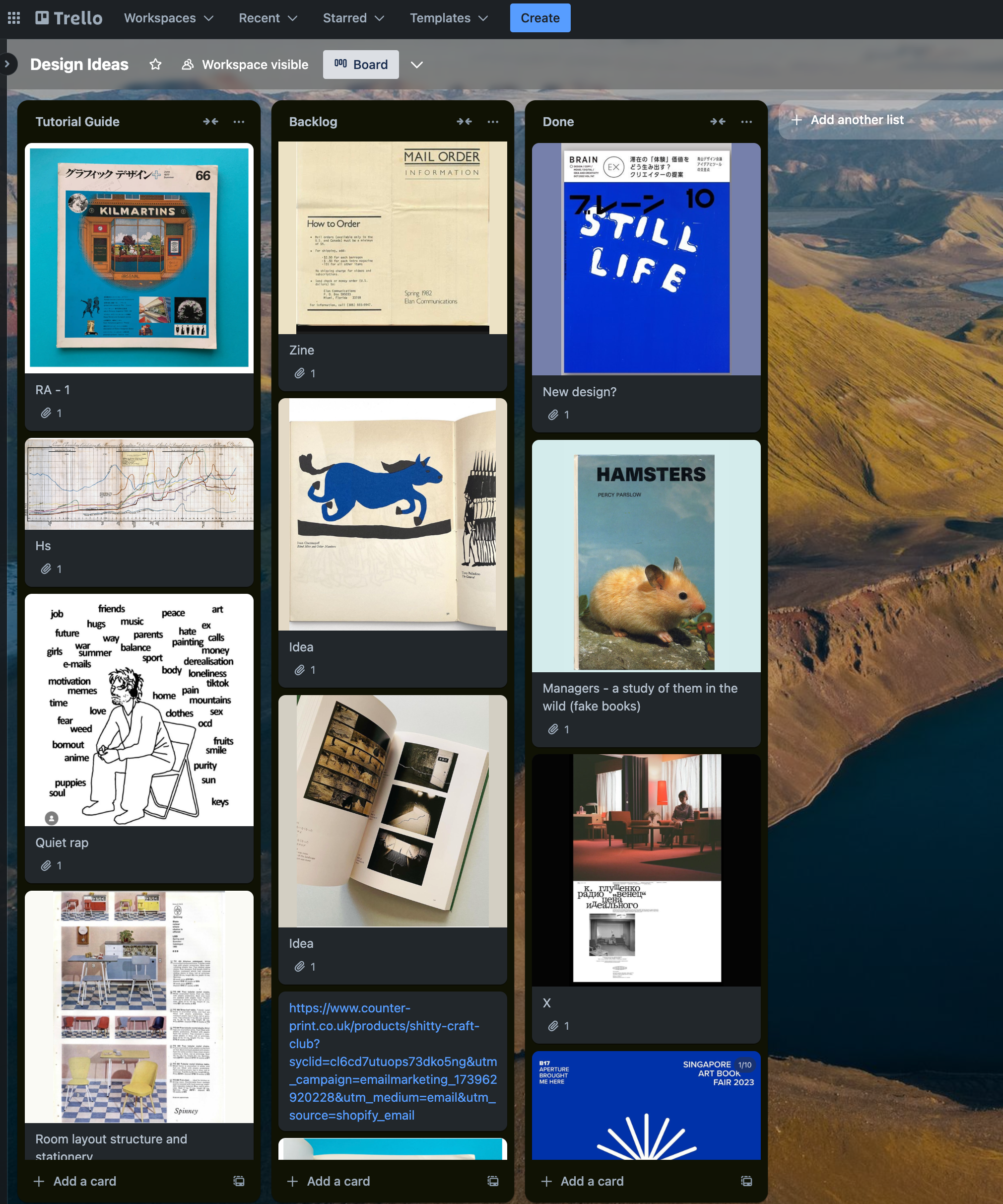
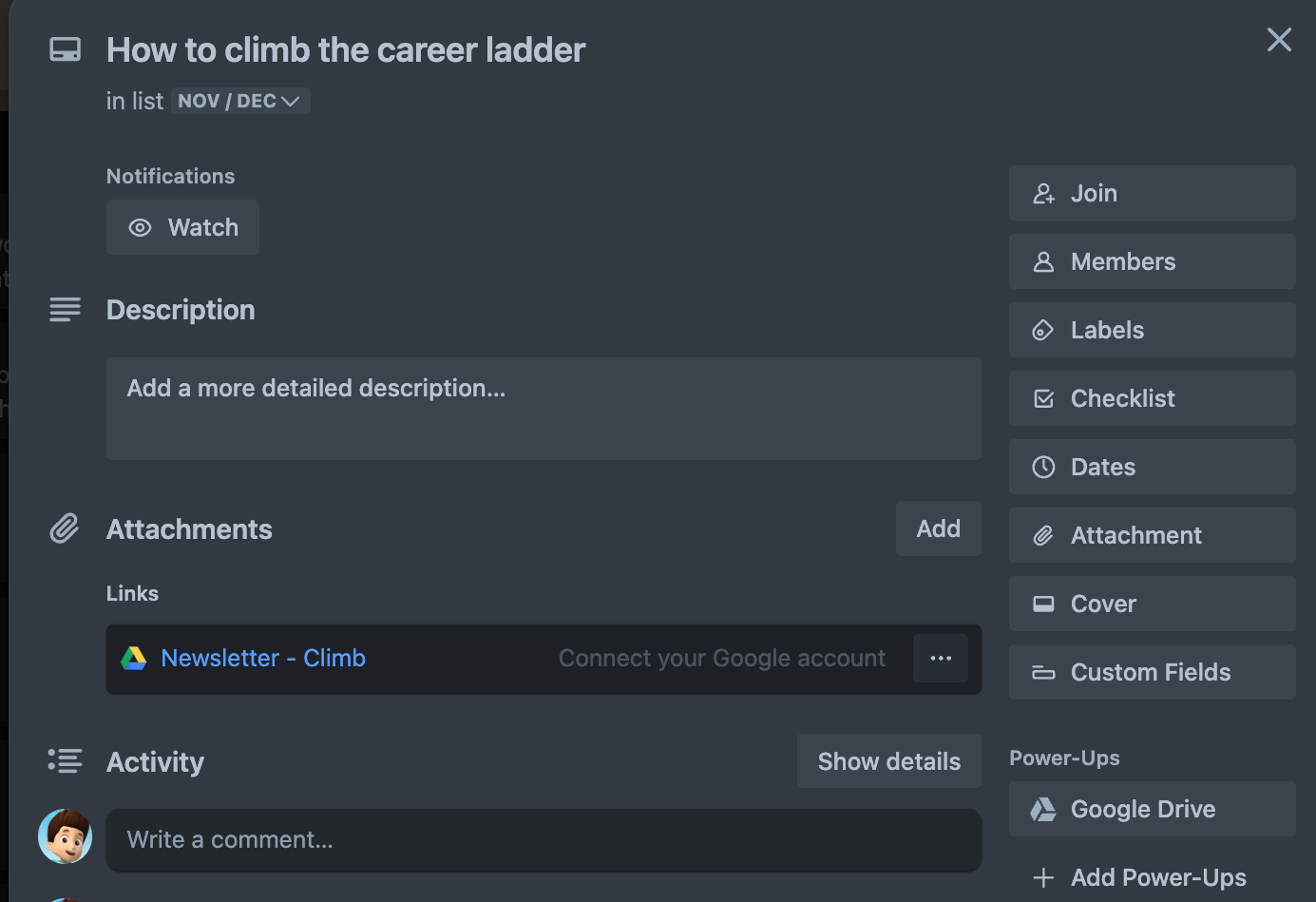
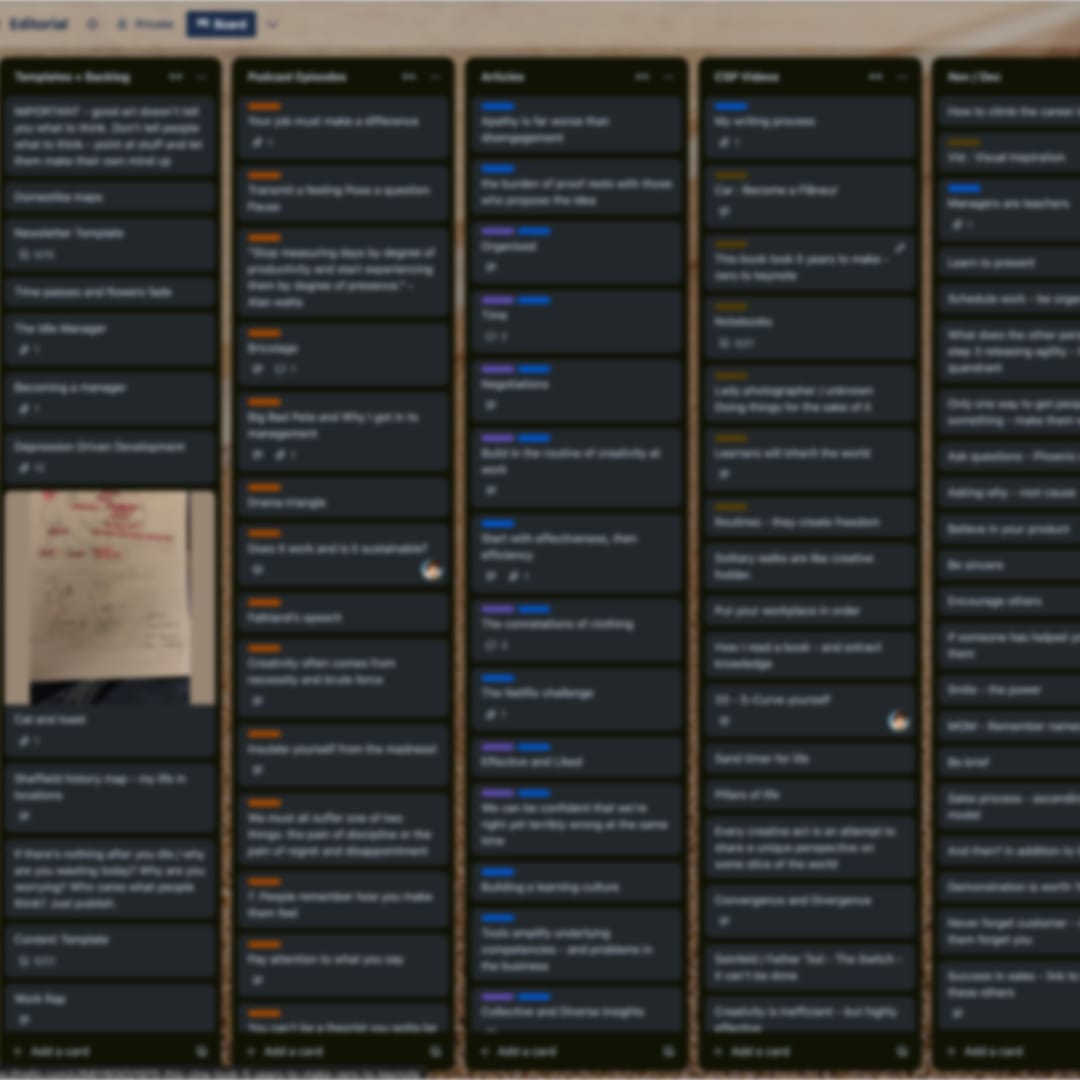
Todoist: The Command Centre
Todoist controls my life. Almost every task starts in the Inbox. Each Sunday, I sort tasks into projects and assign due dates.
Tasks can be scheduled using natural language:
- “Clean the studio ev Mon” → every Monday
- “Ev other Tue” → every other Tuesday
- “Last day of the month”
Google Calendar integrates with Todoist, so I can see events alongside tasks. This avoids juggling multiple apps.
I keep Todoist simple. Overly complex setups don’t work for me. Projects align with my “Pillars of Life”:
- Family & Life: Household chores, errands, family activities
- Learning: Courses I want to complete, such as Domestika tutorials
- CM Delivery Schedule: Tracks content published and scheduled
- Consulting Business: Finance, sales, marketing, client work
- Creative Projects: Books, courses, and experimental MSIs
I use the "Boards" functions and visuals (turns the todo list into a Kanban board), as I think this looks and feels more manageable than a giant list of tasks.
Todoist helps me schedule and track content without losing oversight. What's especially useful is the "upcoming" view which gives me a week at a time glance of what's on my agenda and plan.

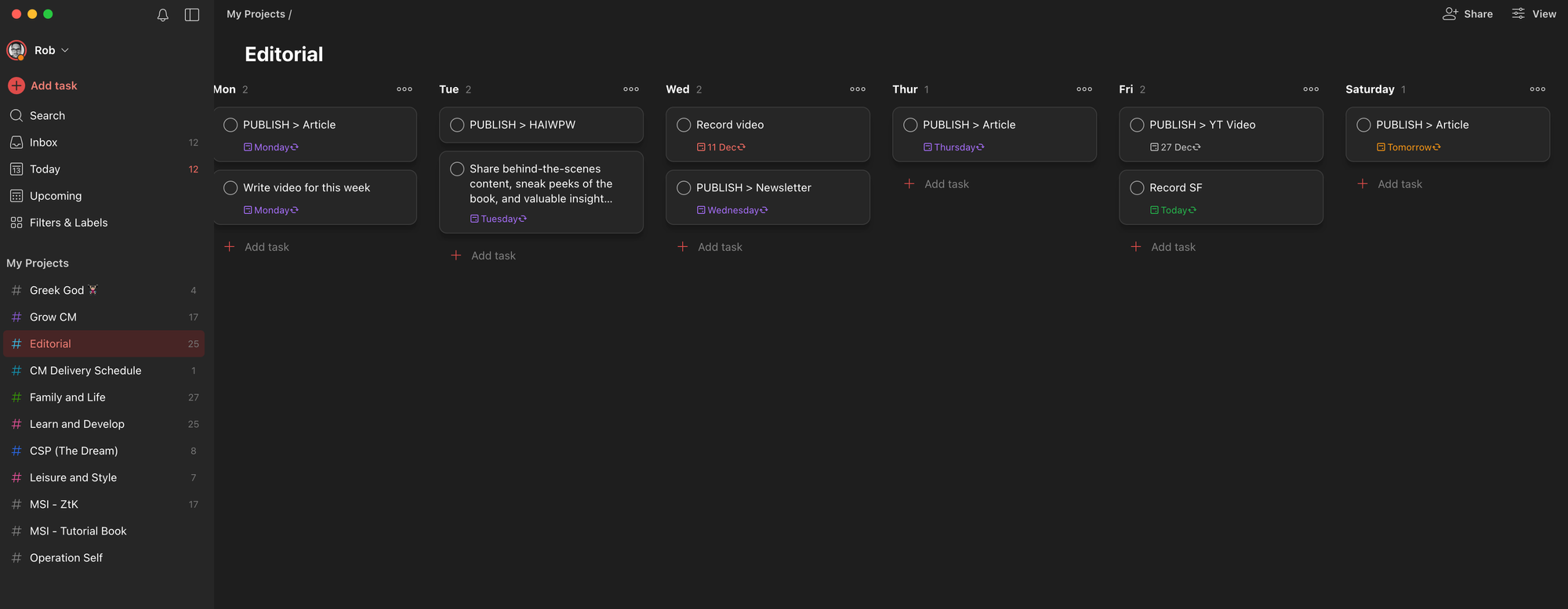
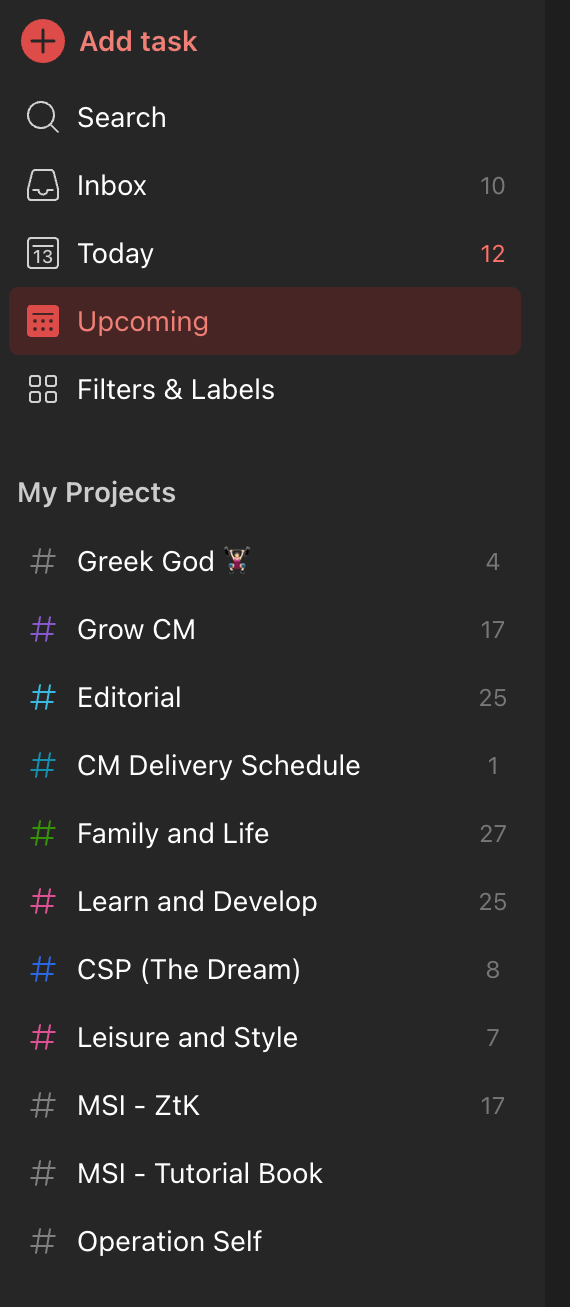

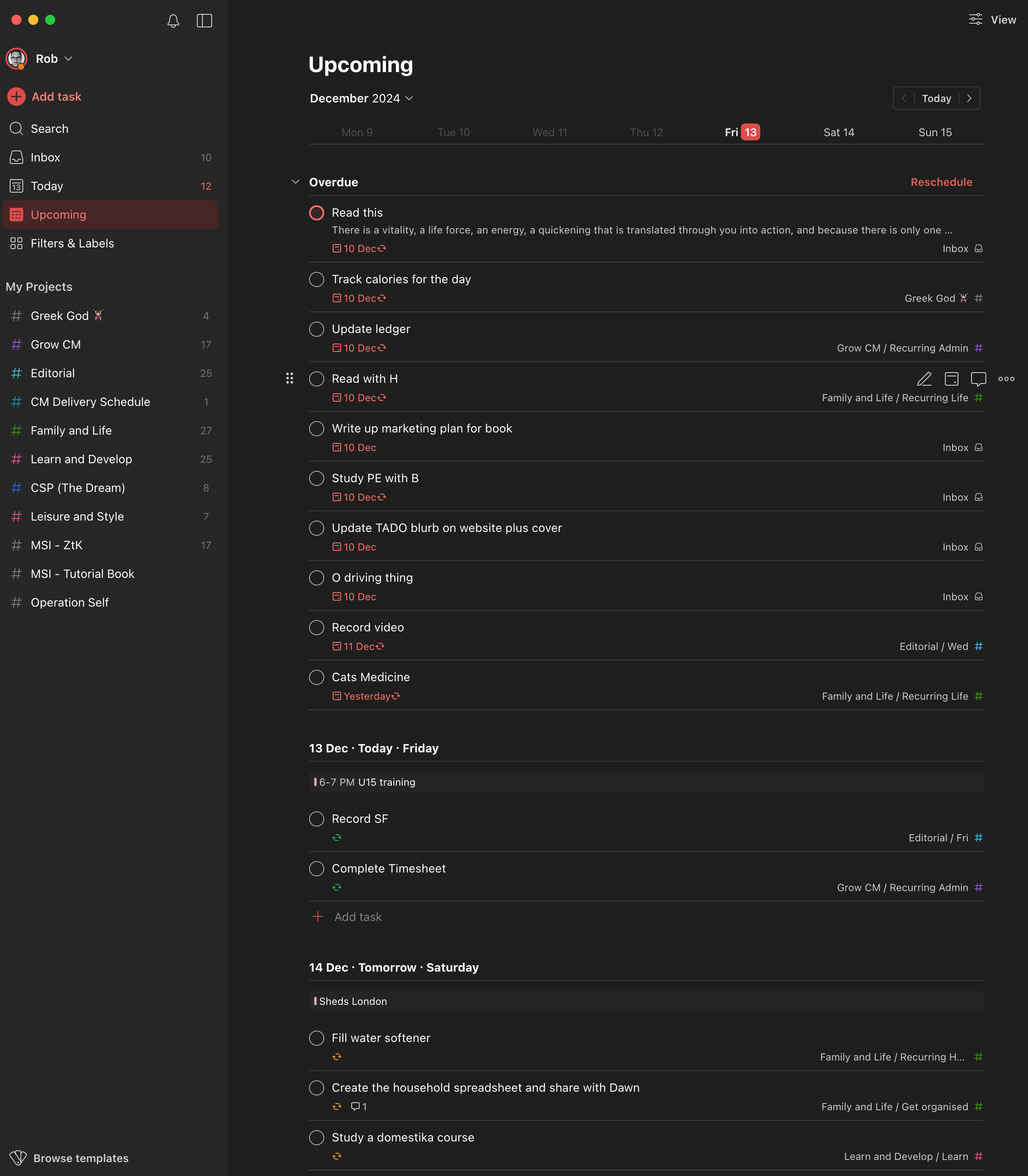
Paper: The Analogue Space for Thinking
Most of my thinking happens on paper. Yellow legal pads, Moleskine notebooks, and mechanical pencils are my companions.
👉 See this post on my essential stationery
Paper helps me explore ideas without digital distraction. Outlines for books, posts, and videos all start here. When I struggle at work, I revert to paper to work problems through. My Personal Knowledge Management system blends digital and analogue tools seamlessly.
Key Principles of My System
- Decide What Matters: Identify plates worth spinning. Delegate or drop the rest.
- Integrate Tools: Trello for ideas, Todoist for tasks, Google Calendar for events, Google Docs for writing.
- Keep it Simple: Overcomplicating systems kills usability. If it's too hard to use – you won't use it. Remember, all productivity systems are nothing more than containers with rules – make the rules simple and easy, and effective.
- Automate Repetitive Tasks: Finances, recurring tasks, and scheduling should be autopilot where possible.
- Combine Digital and Analogue: Paper supports thinking; digital supports execution.
- Time-Block Priority Activities: Family, work, and creative projects get dedicated calendar space. 👉 See this post on calendar blocking.
- Review Weekly: Process Inbox, reorder priorities, adjust as necessary.
A Few Examples in Action
- Family Health Project: My eldest son wanted to train with me for a holiday. I added it as a recurring task in Todoist and now track progress weekly.
- Zero To Keynote Book: Workflow managed via Trello → Google Docs → Todoist to schedule posts, social media, and marketing tasks.
- Creative Side Projects: Temporary Trello and Todoist boards keep new books or courses organised until they become established MSIs. (Multiple Sources of Income)
Lessons Learned
- A system is only as good as its alignment with your priorities. Don’t just do more; do the right things.
- Visual organisation matters. Seeing tasks and ideas helps manage overwhelm.
- Integration is key. Google Calendar, Todoist, Trello, and Google Docs work together to reduce cognitive load.
- Flexibility is crucial. Plans change, priorities shift, and systems must allow that.
- Regular review prevents backlog from becoming unmanageable.
Final Thoughts
My system is not magic. It doesn’t make me superhuman. It simply allows me to focus on what matters, prevent overwhelm, and make consistent progress across multiple life domains.
If there’s one takeaway: decide what matters, build simple systems to support it, and review often.
Footnote: When working with clients, I simplify even further — primarily using time-blocking in their work calendar.
Trinity of Effective Communication Bundle: Get Zero to Keynote, Workshop Mastery, and the Communication Superpower course—all in one powerful package.
